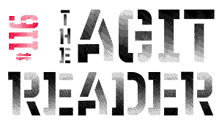
Medicine Show
Water
The general consensus about this, the second Dream Syndicate album (originally released in May of 1984), was that the LA band’s 1982 debut, The Days of Wine and Roses, was such a stone classic of post-punk that their follow-up was bound to be judged lacking. Wine and Roses was truly just so damn good (in my opinion, one of the 10 best rock records of the decade). It combined the moody ’60s jangle-rock leanings of the paisley underground demi-scene of that metropolis with a true reinvention of the Velvet Underground’s distortion-desperation sides, a dark sonic slicing that’s always been hard for sun-dappled west coasters to appropriate. Not to mention the sharp hooks within—not surprising from leader Steve Wynn, who drops Abba as an influence in a 1983 interview in the liner notes. And aside Wynn’s noir characters’ lyrical brooding was bassist Kendra Smith adding morose beauty via her vox and visage. (By Medicine Show she was out of the band.)
But with Sandy Pearlman, he of Blue Oyster Cult fame and presumed “ruiner” of the Clash’s second album, as Medicine Show’s knob-wielder, the “sell-out” debates were well-formed at that point, and most college radio fans assumed upon hearing such blasphemy that the Dream Syndicate was going for the gold. As if playing seven-minute songs about death, depression, daddy issues, and no dough would have landed them on the charts next to Thompson Twins and Spandau Ballet! Not unlike the Clash on their second album, Pearlman’s hard-driving hand was probably what the band needed to keep from crumbling under the follow-up pressure—especially considering the Dream Syndicate was, well, crumbling already. Guitarist Karl Precoda, who looked to be the guitar hero of a new generation, quit the band by 1985 to go work in movies. Dote on that sad bit of music history for awhile, but within two albums, Precoda had gone from mashing Lou Reed and Sterling Morrison’s spindly gnarled noise to Medicine Show’s stripped-down take on big-sky Neil Young riff-plowing, often retaining something in between that might’ve changed ’80s rock. Oh well.
Wynn mirrored the straightforward approach in his storytelling here. If you’ve stuck with Wynn through his various Syndicate and solo jaunts through the years, it’s obvious that this was the jumping off point for his rustic forays. Like the work of other LA cohorts like the Blasters and X on their later records, Medicine Show is just as much a seed of the ‘90s alt-country scene. It’s a matured shifting of gears to the dusty highway drive out of the paisley underground. This album was more accessible as a rock record for sure, but it was out of time for it’s lyrical bordertown solitude, rhythmic cowboy punch, and big citified sonic explorations (on side two especially), all in opposition to the mall-metered day-glo 1980s popping around it. In that sense, Medicine Show was as weird as Wynn ever got.
Considering this album had been out of print to the point that even the CD was going for $30-plus on eBay, simply adding the easy to find and just okay 1984 EP, This is Not the New Dream Syndicate... Live, is disappointing, considering the non-LP singles, flexi-discs, and compilation tracks from that time period. But some good long liner notes from David Fricke and just getting this thing out there again is a welcome sign, maybe even a reminder to current bearded indie folk-rockers to read a Horace McCoy novel instead of Pitchfork, get a shave, suck back a shot, and turn up their damn amps.
Eric Davidson
PAST PERFECTS
Fela Kuti, "Zombie" Batch, Part II
Royal Trux, Cats and Dogs
Fela Kuti, "Zombie" Batch, Part I
Arab Strap, The Week Never Starts Around Here and Philophobia
Superchunk, No Pocky for Kitty and On the Mouth
Queens of the Stone Age, Rated R
Billy Squier, Don't Say No
Department of Eagles, Archive 2003-2006
Spur, Of the Moments
Concrete Blonde, Bloodletting
The Undertones
Oasis, Time Flies 1994-2009
The Cure, Disintegration
Shoes, Eccentric Breaks and Beats
